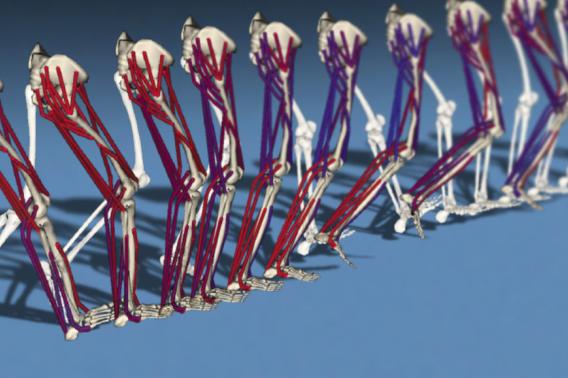Project Summary
Human movement results from the coordination of muscles, tendons, joints, and other physiological elements. While children learn to walk, run, climb, and jump in their first years of life and most of us can navigate complex environments -- like a crowded street or moving subway -- without considerable active attention, developing controllers that can efficiently and robustly synthesize realistic human motions in a variety of environments remains a grand challenge for biomechanists, neuroscientists, and computer scientists.
To solve this research problem, we created a virtual physiologically accurate musucluskeletal environment in OpenSim software. Together with a team from EPFL we set up a competition and asked participants to build models of the brain. The competition was accepted as one of the 5 official competitions at NIPS 2017. During my visit at EPFL we wrote a paper summarizing the challenge, we designed the next edition of the challenge, and we created learning materials (http://osim-rl.stanford.edu/) to attract more people and further broaden the impact.
Here is a video summarizing the challenge
Project Details
Funding Type:
EPFL-Stanford Exchange
Award Year:
2018
Lead Researcher(s):
Team Members:
